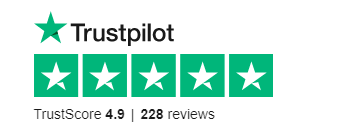Discover the four benefits of Visual Facilitation in training. John Roskamp is a trainer at LRQA and provides many training courses with visual support. Read the article.
There are many benefits to taking a training course with Visual Facilitation. Some of the advantages are:
1. Visual
The drawings are used to clarify complex concepts in management systems. As a result, the participants process and remember the information much better. The use of drawings reduces complexity and shows 'the bigger picture', which has proven helpful for participants' understanding. This helps them tremendously in their learning process.
For example: Imagining complex concepts
An example is the use of a drawing to illustrate a process model, an audit cycle, or even an entire ISO standard, so that participants can more easily understand how such a concept works, what the relationship is between the different components, and how these different concepts work together to achieve continuous improvement.
2. Interaction
Visual Facilitation increases interaction during training, which increases participant engagement and understanding. The trainers start with incomplete drawings, which are completed together with the participants. The participants are stimulated to master the material in an almost playful way. In this way, a difficult and model-based theory becomes simple, easy to remember and dynamic in an interactive way.
For example: Group discussions
In a management system training with Visual Facilitation, group discussions are used to work out connections between paragraphs in ISO standards in a mind map. During these discussions, participants share their ideas and experiences, solve problems together, and learn from each other's perspectives. Drawings on flipcharts are used to capture the results in a visual way and keep everyone focused and engaged.
3. Linguistic
By paying attention to the often unnecessarily complicated language and terminology used in management systems, participants develop and improve their communication skills. Visual Facilitation helps clarify complex terms and concepts through the combination of visuals and clear, concise language, making participants feel more comfortable and effective at communicating about management systems.
For example: Clear explanations of terminology and concepts
An example of a linguistic advantage of Visual Facilitation is the use of simple and straightforward language to clarify complex terms and concepts. This can take the form of a word web, in which the trainer clearly defines the most important terms and concepts from a management system and depicts them in a drawing. This helps participants develop a better understanding of terminology and allows them to communicate more effectively about management systems.
4. Accessibility and inclusivity
By attending a training with Visual Facilitation, you can be sure that the material is presented in a way that is accessible and inclusive to all participants with different learning styles. Learning is enhanced by the combination of listening, thinking, speaking and being physically active. It is this process of constructing and discussing that creates overview and insight, as in "one picture is worth a thousand words".
In short, Visual facilitation is an experience and a very creative method to let complex material speak in a remarkably effective, dynamic, interactive way. Following a training course with Visual Facilitation is therefore a unique, fun and valuable investment in your professional development!

Here are just a few examples of feedback from previous participants on Trustpilot:
"Unique methodology. I really liked the method without Powerpoint but with drawings and active participation through the workbook. Good balance between receiving theory/information and practising directly with practice."
"Recently, we participated in an advanced level HACCP training with a team of quality experts. The trainer guided us through a very interactive and never boring training with great photos, drawings, examples and theory. Very amazing ....."
"We had 2 days of training on internal audit & ISO 9001:2015. It was a fun and interactive training that combined theory and practice. The use of flip charts also made it more original and lively. It gave learners a better understanding of ISO 9001 requirements and the reasons why they exist. I highly recommend it to your company!"
"Competent and dedicated instructor with a very effective course style. Clear explanation of the course material using a very fresh method by using hand-drawn visual aids."
"The ISO 9001 Lead Auditor was really good. The trainer used beautiful drawings and different group dynamics to explain the content and maintain the focus of the participants."

